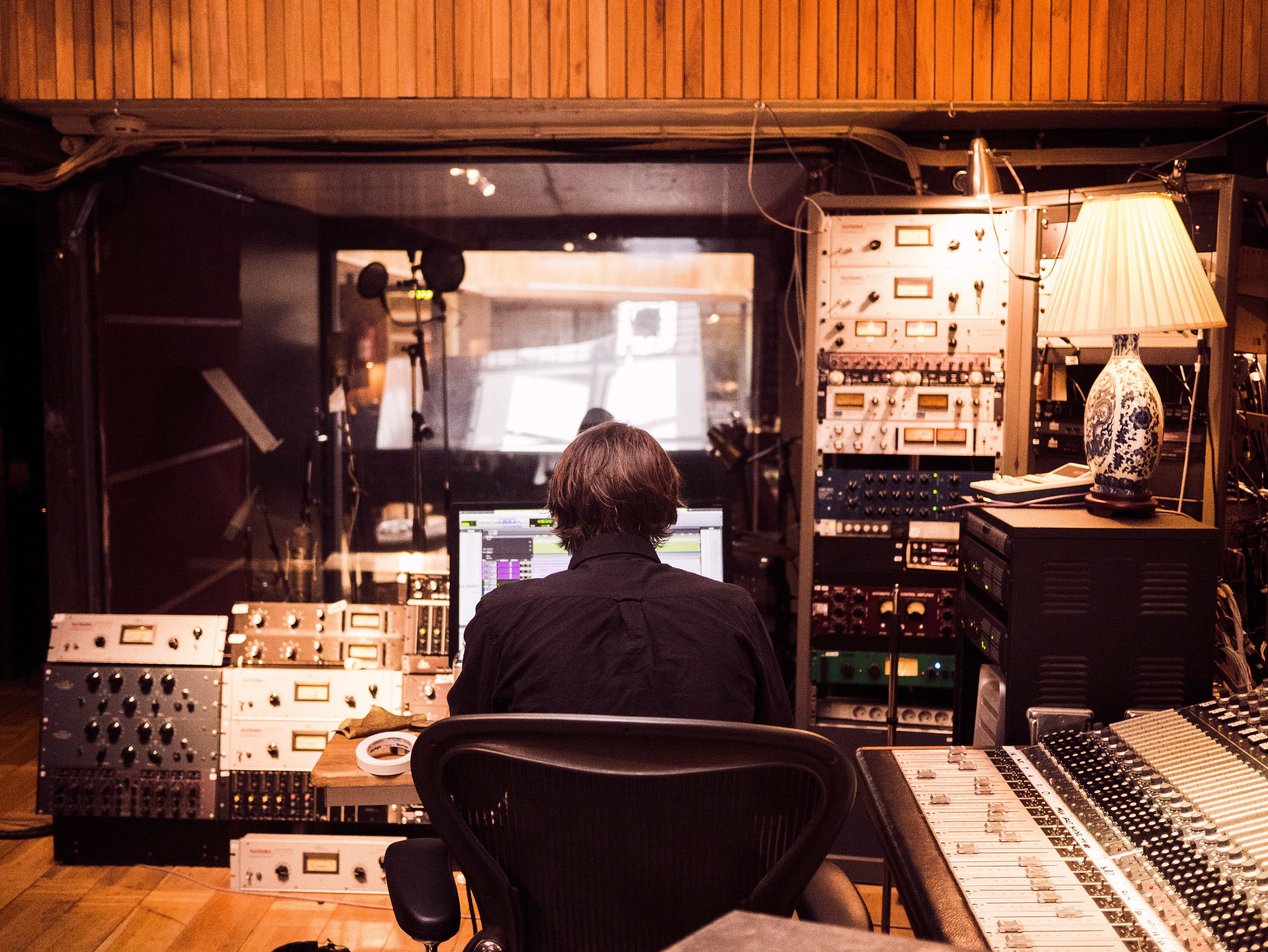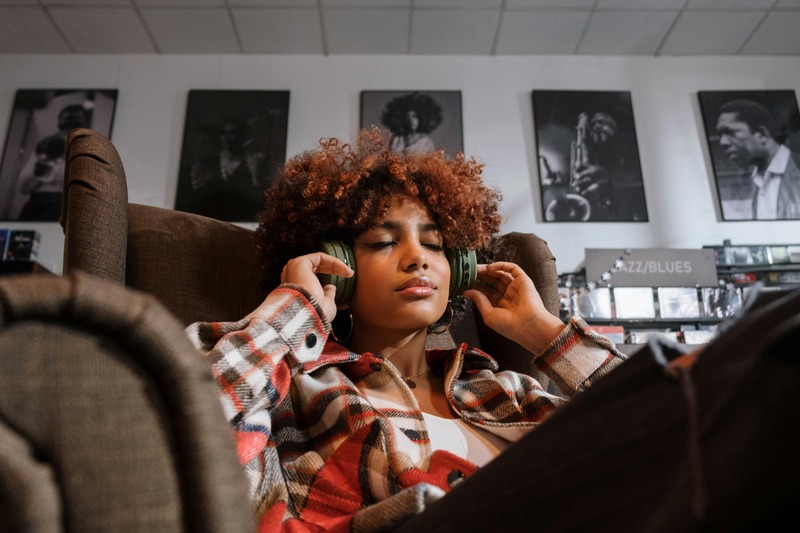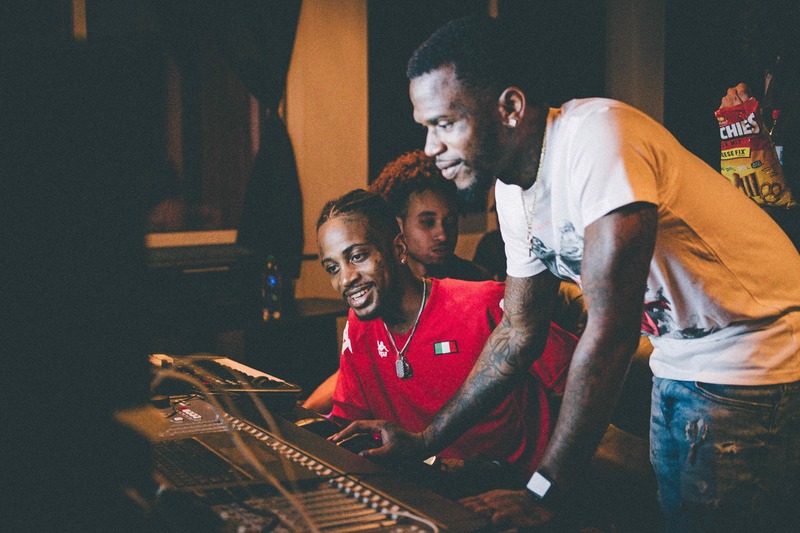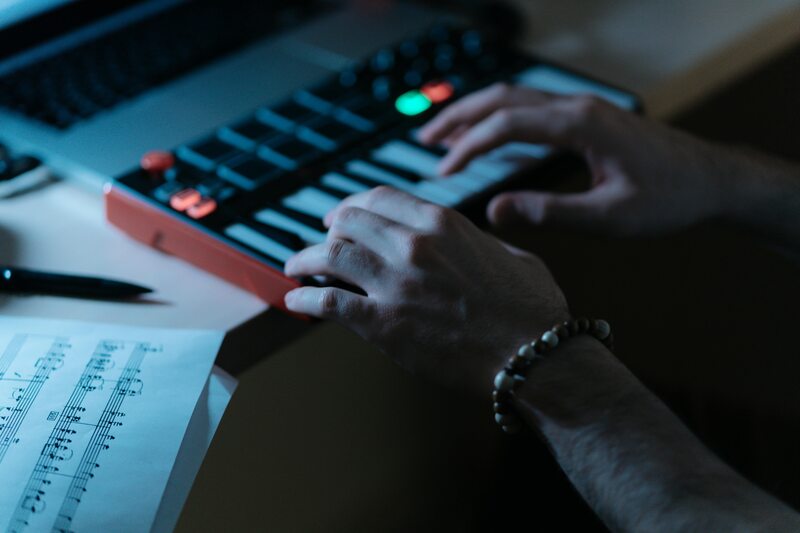Blog
How to Find Your Sound as a Producer
22 Oct '2025
Unpacking the habits, choices and influences that give producers their identity.

Image by John Hult on Unsplash
Developing your own sound is a natural product of nurturing your craft as a producer. Listeners eventually start to recognise your natural tendencies and sonic signature that shine through in your music.
Taking time to be conscious of what calls out to you and the methods that come most naturally is key. It’s important to remember that this takes time and is not something that can be forced.
In this blog, we will explore various tools and techniques you can use to encourage your own unique expression.
Listen to as much music as possible
The first step in discovering your sound is finding what hits the spot for you. Your signature sound is essentially a product of the music you love, your life experiences and the consistent creative choices that become your musical DNA.
 Credit: Cottonbro Studio on Pexles
Credit: Cottonbro Studio on Pexles
Be curious, explore the sea of genres out there and make time for active listening sessions. How about making note of what inspires you and particular elements you like? Curiosity is vital in this process. Without forcing yourself to develop a sound, a natural openness to what resonates will guide you.
Inspiration is inevitable when listening to something we enjoy. Feeling a burst of motivation to produce and explore is different to imitating what you have found. Don’t just copy the music you love, experiment to find your own, unique style, influenced by the sounds of artists that inspire you.
Experiment with sound design
Learning by doing is a staple in the world of production. Experiment with various tools inside your DAW, or research a new technique like 'how to layer sounds, samples and drums for your best sound design yet'.
Diving into a new technique is a win-win with sound design. You can improve your knowledge of production, and inevitably your tracks, all while naturally tuning into what speaks to you.
Building up your library of samples, tools & techniques will naturally refine your sound. Pay attention to what sticks out - maybe it’s those acoustic rims that cut through around 300Hz, you might love the deep sub bass flirting with 20-40Hz. Take Loopcloud for example - once you find something that resonates, you can immediately Find Similar Sounds with a right-click of any sample. Keep an open mind and welcome new methods, inspiring fresh ideas and that bring you closer to your sonic signature.
Break the rules
Often, the most innovative music comes from an abandonment of ‘rules’. With today’s electronic means of production, the possibilities are endless. Do you have a soft spot for classical music, yet also adore drum & bass? Why not grab some classical samples and mix them with drum & bass elements.
Sampling is a gateway to innovation. Placing one sample in just the right way is all it takes to spark inspiration for an entirely new track. Here are six strategies for starting new ideas with samples you might like to check out.
Finding freedom in difference: J Dilla & Björk
Speaking of rule breaking, J Dilla challenged almost every rule in music by programming his drum machine to play ‘off beat.’ Not just slightly off, but deliberately off. By breaking up the rigid timing that had governed musical performance in every genre, he developed the immediately recognisable swing and flow in his tracks that is adored globally.
Known for his obsessive record shopping habit, Dilla would dig out all sorts of music, recording the vinyl directly into his MPC. The range of samples in his process illustrates the importance of staying open and curious when exploring music.
Much of his Hip-Hop classics featured samples from 1970s Soul and Funk from artists like Stevie Wonder, James Brown and The Isley Brothers, as well as Jazz, particularly South American artists like Gato Barbieri and Luiz Bonfá.
Björk also found a voice within her uniqueness. Alongside a highly distinct, three-octave vocal range, her approach is very much genre-defying and rule-breaking. Blending electronic and rave-inspired sounds with an organic palate, her experimental approach has led to some of the most innovative music.
Her work is known for integrating unusual instruments and rhythmic structures, creating unique combinations and cultural contrasts. The tear-jerker ‘Stonemilker’ blends orchestral strings with slippery electronic textures for instance.
Take note from these two artists - find freedom in your uniqueness and trust your voice. If you’re making strictly electronic music, why not try merging it with some acoustic instruments from the Middle East?
Collaborate and ask for feedback
One of the best ways to learn is by working with others. Witnessing another's process can open up a world of possibilities you may not have considered. Even if you never use the same technique, by acquiring the knowledge of how sounds can work and be processed, you will inevitably try new things and evolve your productions.
Collaborating is also fun. It’s important to keep a sense of play and enjoyment at the forefront of your pursuits. Once you start to overanalyse what you’re doing, both progress and satisfaction go out the window.
 Credit: Osarugue Igbinoba on Unsplash
Credit: Osarugue Igbinoba on Unsplash
Harnessing a sense of playfulness in your process encourages happy accidents. Just by ‘playing around’, you may find that missing link that gets your track over the line.
Define what makes a sound ‘yours’
It’s useful to think about what people actually mean when they talk about an artist’s ‘sound’. Is it the instruments they use? The rhythms? The way they process their drums? For many, it comes down to a combination of small details that begin to create a subtle thread across their work.
There isn’t a one-size-fits-all answer. Perhaps it’s a snare you always come back to, or a favourite synth preset that you reshape over and over. These recurring elements slowly become part of your identity.
This also extends to the way you treat sounds. Maybe you always sidechain in a certain way, or you like to drench things in reverb until they feel washed out and distant. These decisions are just as much a part of your sound as the notes or chords you are writing.
In Loopcloud, you could try out the Save Sessions feature to always have access to the exact sounds you have used before, ready to recycle and reshape into a new track. The act of re-using doesn’t mean repeating yourself; it builds continuity in your work, even when everything else in the track is different.
Creating habits that support your sound
Another way to uncover your direction is to develop habits that let ideas emerge quickly and without pressure. For some, this might mean setting aside regular time to simply sketch ideas - short, 8-bar loops that don’t need to become full tracks. Others prefer to build detailed sound palettes before starting a session, curating a set of samples or presets that feel inspiring and cohesive. Find what feels right for you and work from there.
Over time, these habits reinforce your intuition. The more you make small decisions about what to keep, what to discard and what to come back to, the more you start to notice patterns in your choices. This is where the threads of your sound reveal themselves
Arrangement and space
While it’s true that arrangement might not be the strongest marker of identity, it still plays a role. The way you let a track breathe, the length of your breakdowns or how you prefer to build energy can say a lot about your style. Some producers strip everything back to near silence before a drop, others prefer to keep a constant pulse without dipping in momentum.
 Credit: Cottonbro Studio on Pexles
Credit: Cottonbro Studio on Pexles
Think about space, too. Where do you leave silence, and where do you fill every corner? Many producers are recognisable not just because of their sound sources, but because of the way they use (or avoid) space.
Less is more
Sometimes your sound is less about what you add and more about what you leave out. Editing is an overlooked part of production, but it’s often here that identity really shows. Choosing which elements deserve focus and having the discipline to remove those that don’t can reveal your instincts as a producer.
It can be helpful to approach editing with fresh ears. Leaving a project for a day or two and returning with a new perspective gives you space to hear what truly works. Over time, the decisions you make in these moments become consistent and that consistency is a core part of your sound.
Trust the process and keep making music
A signature sound isn't found overnight. Your blueprint emerges organically through consistent creation, allowing your unique style to develop and evolve. The process of production will always have something to teach you.
Whether you jam for half an hour and delete the recording, or you write five tracks in a day, it’s important to trust the process. Each session nurtures your own sound and will always be contributing to something, even when it feels like a waste of time.
10,000 hours of dedicated practice is the said goal for achieving mastery in any skill. Embracing the process of production in all its forms is key to moving forward. You won’t always feel like you’re making progress, but simply showing up and tinkering with sounds is always adding to the hours.

